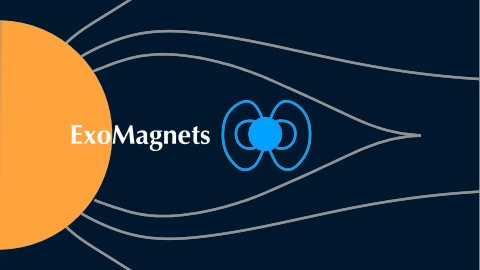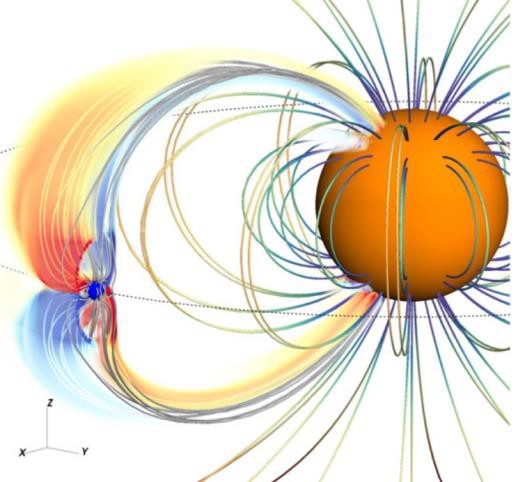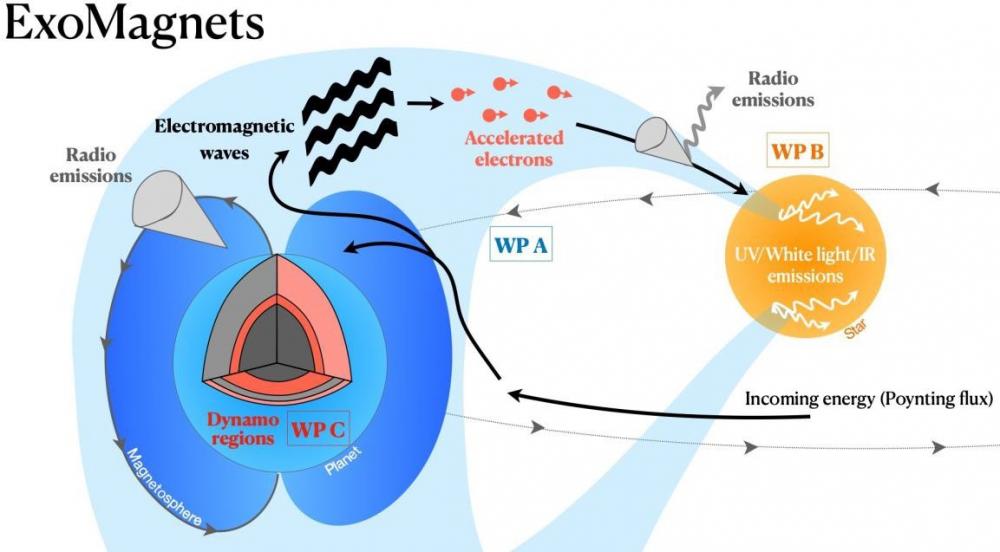Antoine Strugarek, an astrophysicist in Irfu's Astrophysics Department, has been awarded an ERC Consolidator contract. The core of his ExoMagnets project is to understand the magnetic coupling between an exoplanet and its star, and therefore the magnetic field of exoplanets, which is crucial for the habitability of a planet.
The aim of the ExoMagnets project is to develop new theories and high-performance simulations using future exa-scale computing infrastructures in order to exploit existing and future observations of the magnetism of distant exoplanets.
Research into exoplanetary sciences has soared since the first discovery of planet 51 Peg b by Mayor and Queloz (1995). More than 5,500 exoplanets have been discovered since then, revolutionising our understanding of the formation and evolution of star-planet systems. More and more exoplanets are being discovered today, and their characteristics and those of their host star are being determined with precision using space-based and ground-based observations at several wavelengths.
However, one fundamental aspect of exoplanets still eludes us: what type of magnetism and magnetosphere do they possess?
On Earth, we know that the magnetic field protects the atmosphere from the space environment and is essential for sustaining life as we know it. With the arrival of the SKA observatory, scientists will be collecting magnetospheric radio signals from hundreds of exoplanets. These magnetospheres also lead to star-planet magnetic interactions for about a third of known exoplanets, which leave observable traces on the host star's activity markers.
In addition to these new detections, new theoretical tools for characterising the magnetism of a large sample of exoplanets will fill the current theoretical gaps in the magnetic coupling between an exoplanet and its local environment.
The ExoMagnets project is divided into three main tasks and associated working groups that address the following three overarching objectives:
- WPA) Develop numerical simulations taking into account the complexity of planetary orbits, the non-axisymmetric structure of stellar environments, atmospheric escape and the electromagnetic response of the entire planetary magnetosphere.
- WPB) Characterise the channelling of energy from the vicinity of an exoplanet into photon emission from thermal energy due to heating processes and non-thermal emission from accelerated particles in the host star's atmosphere.
- WPC) To develop a theoretical understanding and numerical simulations of dynamo action and induction within exoplanets in short-period orbits in order to assess possible magnetospheric states and to enable the modelling of realistic star-planet magnetic interactions.
|
The exploitation of multi-wavelength data, the development of new theoretical models, tested on numerous exoplanet systems, and very high-performance simulations are the ingredients that will enable us to understand what type of magnetism can support an Earth-type exoplanet in the habitable zone of its star. This work will pave the way for a new science of exoplanetary magnetism... |
Contact DAp: Antoine STRUGAREK
Out of 2,130 candidates, the European Research Council (ERC) has selected 308 researchers for this year’s Consolidator Grants....
• Structure and evolution of the Universe › Planets, star's formation and dynamics, interstellar medium






